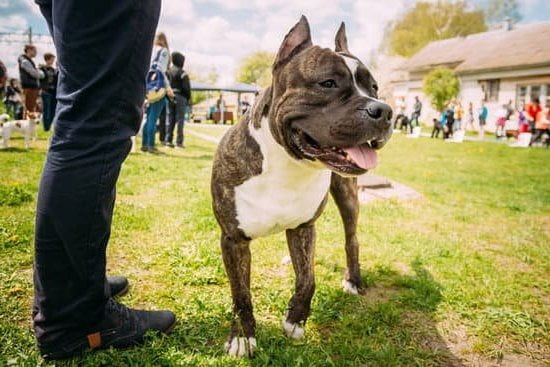Crate training is an essential skill for any dog, regardless of age. However, when it comes to a 1-year-old dog, it can be particularly beneficial in shaping their behavior and providing them with a safe and comfortable space. In this article, we will explore how to crate train a 1-year-old dog effectively, addressing the importance of this training method and providing practical tips for success.
At 1 year old, dogs are still young and full of energy, making crate training an important tool in managing their behavior and keeping them safe when you’re not able to directly supervise them. Understanding the importance of crate training for a 1-year-old dog is crucial in ensuring they have a positive experience with their crate and see it as a safe haven rather than a punishment.
In the following sections, we will delve into the different aspects of crate training for a 1-year-old dog, starting with choosing the right crate and setting it up properly to introducing your dog to the crate in a positive way. We will also cover creating a schedule for your dog’s time in the crate, addressing separation anxiety, dealing with common challenges, and eventually transitioning your dog to have more freedom at home.
Follow along as we guide you through the process of successfully crate training your 1-year-old dog.
Choosing the Right Crate
Crate training is an essential aspect of raising a well-behaved and disciplined 1-year-old dog. When it comes to choosing the right crate for your furry friend, there are several factors to consider. The type of crate, its size, and the material it’s made of all play a crucial role in ensuring comfort and safety for your dog.
When it comes to types of crates, there are three main options to choose from: wire crates, plastic crates, and soft-sided crates. Wire crates are popular for their visibility and ventilation, while plastic crates provide a more den-like environment that can make dogs feel safer and cozier. Soft-sided crates are lightweight and portable, ideal for travel or temporary use.
The size of the crate is equally important. Your 1-year-old dog should have enough space to stand up, turn around, and lie down comfortably in the crate. If the crate is too big, your dog may be inclined to use one end as a bathroom area, defeating the purpose of crate training.
On the other hand, a crate that’s too small can cause discomfort and anxiety for your dog. Measure your dog’s dimensions carefully before selecting an appropriate crate size.
As for materials, durable construction is key to ensuring the safety and security of your dog in the crate. Look for quality materials that can withstand chewing and scratching without posing any hazards to your pet.
| Types | Sizes | Materials |
|---|---|---|
| Wire Crates | Appropriate size for standing up/turning around/lying down | Durable construction |
| Plastic Crates | Not too big or too small | Safe and secure materials |
Setting Up the Crate
When it comes to crate training a 1-year-old dog, setting up the crate is an essential step in ensuring your dog feels comfortable and secure in their new space. The location of the crate, the bedding inside, and the accessories you include can all play a role in how successful your crate training efforts will be.
Choosing the right location for your dog’s crate is crucial. It should be placed in a quiet, low-traffic area of your home where your dog can feel safe and relaxed. Avoid placing the crate near loud noises or areas where there is a lot of activity, as this can make it difficult for your dog to relax and rest.
When it comes to bedding, opt for something soft and comfortable for your dog to lie on. Whether it’s a plush blanket or a cozy pet bed, providing comfortable bedding can help your dog feel more at ease in their crate. Additionally, adding some of your old clothing or a piece of fabric with your scent on it can also help ease any anxiety your dog may have about being confined.
Consider adding some accessories to the crate that can help create a positive association for your dog. Toys, treats, and chew bones can provide mental stimulation and keep your dog entertained while they are in the crate. By making the crate an enjoyable place with fun toys and tasty treats, you can help reduce any anxiety or reluctance your dog may have about spending time in their new space.
Setting Up the Crate
- Choose a quiet location for the crate
- Select comfortable bedding for inside the crate
- Add accessories such as toys and treats to create a positive association
By taking these steps to set up the crate properly, you can help create a positive environment that encourages your 1-year-old dog to see their crate as a safe and secure space.
Introducing the Dog to the Crate
Introducing your 1-year-old dog to the crate is a crucial part of the crate training process. It’s important to approach this step with patience, consistency, and positive reinforcement in order to build a positive association with the crate.
Positive Reinforcement
When introducing your dog to the crate, it’s important to use positive reinforcement techniques such as treats, praise, and toys. Encourage your dog to explore the crate on their own terms and reward them for showing any interest or curiosity towards it. Avoid forcing or coercing your dog into the crate, as this can create a negative association.
Building a Positive Association
In order to build a positive association with the crate, start by keeping the door open and placing some treats or toys inside. Allow your dog to freely enter and exit the crate as they please. As they become more comfortable with going in and out of the crate, begin feeding them their meals near or inside the crate to further reinforce positive experiences.
Patience and Consistency
It’s important to remember that every dog adjusts to crate training at their own pace. Be patient with your 1-year-old dog as they become acclimated to the crate and remain consistent in your approach. Avoid using the crate as punishment or leaving your dog in it for extended periods of time initially.
By using positive reinforcement techniques and allowing your dog to adjust at their own pace, you can help them build a positive association with their crate as part of their daily routine. This will set a strong foundation for successful crate training for your 1-year-old dog.
Creating a Crate Training Schedule
Setting up a consistent schedule is crucial when crate training a 1-year-old dog. This not only helps in establishing a routine for your dog but also aids in potty training and reducing anxiety. When it comes to feeding, it’s important to stick to a regular schedule.
Feed your dog at the same times each day and remove any uneaten food after 20-30 minutes to establish a feeding routine. This will make it easier for you to predict when your dog will need to relieve itself.
In addition to regular feeding times, exercise is equally important in the crate training process. It’s essential to provide your dog with ample opportunities for physical activity, especially before crating them. This can help tire them out and encourage them to rest while in the crate. A tired dog is more likely to relax and settle down during crate time.
Another critical aspect of the crate training schedule is taking your dog outside for potty breaks. Make sure to take your dog outside immediately after they are let out of the crate, as well as after meals, playtime, and naps.
Consistency is key here – take your dog out at the same times every day to help them understand when they should eliminate waste. By sticking to a regular schedule for feeding, exercise, and potty breaks, you can make the crate training process smoother and more effective for your 1-year-old dog.
When setting up a schedule for how to crate train 1 year old dogs takes time but consistency pays off as this allows an effortless transition into being left alone inside the crate without feeling anxious or distressed.
Dealing With Separation Anxiety
Understanding Separation Anxiety
Separation anxiety is not uncommon in dogs, especially when they are first introduced to crate training. It is important to recognize the signs of separation anxiety, which can include whining, barking, destructive behavior, panting, pacing, or attempting to escape from the crate. Understanding that these behaviors are often driven by fear and anxiety can help you approach the situation with empathy and patience.
Gradual Desensitization to the Crate
One effective way to help your 1-year-old dog feel more comfortable in the crate is through gradual desensitization. This involves slowly introducing your dog to the crate in a positive and non-threatening manner.
Start by leaving the crate door open and placing treats or toys inside to encourage your dog to explore on their own terms. Gradually increase the amount of time your dog spends inside the crate, always ensuring that it is a positive experience for them.
Establishing a Routine
Consistency and routine can also help alleviate separation anxiety in dogs. By establishing a consistent daily schedule for feeding, exercise, potty breaks, and crate time, you can help your dog feel more secure and less anxious when it comes time to be crated. Providing mental stimulation through interactive toys or puzzles during crate time can also distract your dog and ease their anxiety.
By understanding separation anxiety in dogs and implementing these tips for helping your 1-year-old dog feel comfortable in the crate, you can make the crate training process a positive experience for both you and your furry companion.
Addressing Common Crate Training Challenges
If your 1-year-old dog is exhibiting signs of whining, barking, or reluctance to enter the crate during crate training, it’s important to address these challenges with patience and positive reinforcement. Dogs may show resistance to being confined in a crate at first, but with the right approach, you can help them overcome their anxiety.
One of the most effective ways to address these challenges is by creating a positive association with the crate. Start by placing treats or toys inside the crate to entice your dog to go in willingly. When they enter the crate on their own, praise them and offer verbal reassurance. Gradually, increase the amount of time they spend in the crate while rewarding calm behavior. This will help them understand that being in the crate is a positive experience.
Additionally, it’s important to avoid reinforcing negative behavior such as whining or barking. If your dog starts whining or barking while in the crate, do not let them out until they have stopped for a few moments. Letting them out while they are making noise will only teach them that whining and barking leads to freedom from the crate. Instead, wait for a moment of silence before opening the door and offering praise for their calm behavior.
Gradual Freedom
When it comes to crate training a 1-year-old dog, the ultimate goal is to provide them with the freedom to be home alone without anxiety or engaging in destructive behavior. This process requires patience, consistency, and positive reinforcement to ensure that your dog feels comfortable and secure when left alone. Here are some tips for gradually transitioning your dog from the crate to being home alone.
Firstly, it’s important to start by gradually increasing the amount of time your dog spends outside of the crate when you are home. This can help them adjust to being out of the crate while still in a familiar and safe environment. Start with short periods of time and gradually increase it as your dog becomes more comfortable.
Another important step in transitioning your dog from the crate is to make sure they have plenty of mental and physical stimulation before being left alone. This can include giving them a long walk or play session before leaving, as well as providing them with interactive toys or puzzles to keep them occupied while you are gone.
Additionally, it’s crucial to create a safe space for your dog when they are out of the crate. This can be achieved by baby-proofing the area and removing any items that could potentially harm or distract your dog. Providing comfortable bedding or blankets can also help them feel secure and relaxed in their designated space.
By following these steps and being patient with the process, you can help your 1-year-old dog feel confident and comfortable when transitioning from the crate to being home alone without anxiety or destructive behavior. Remember that every dog is different, so it’s important to adjust your approach based on your pet’s individual needs and behaviors.
Conclusion
In conclusion, crate training a 1-year-old dog can be a highly beneficial and rewarding experience for both you and your furry friend. By following the guidelines outlined in this article, you can ensure that your dog feels comfortable, safe, and secure in their crate while also helping to address any behavioral issues or anxiety they may have. Remember that patience, consistency, and positive reinforcement are key when it comes to successful crate training.
One of the most important aspects of crate training a 1-year-old dog is choosing the right crate and setting it up in a suitable location. By providing a comfortable and inviting space for your dog, you can help them build a positive association with their crate. Additionally, introducing your dog to the crate gradually and creating a consistent schedule for feeding, exercise, and potty breaks can also contribute to their success in crate training.
It’s important to keep in mind that every dog is unique, and while some may take quickly to crate training, others may require more time and patience. By addressing common challenges such as separation anxiety and reluctance to enter the crate with understanding and compassion, you can help your dog feel more at ease.
Ultimately, by celebrating the small victories along the way and being consistent in your approach, you will be well on your way to successfully crate training your 1-year-old dog.
Frequently Asked Questions
Can You Crate Train a 1 Year Old Dog?
Yes, crate training a 1 year old dog is possible. It may take more time and patience compared to crate training a younger puppy, but it can be done with consistency and positive reinforcement.
How Long Can a 1 Year Old Dog Stay in a Crate During the Day?
A 1 year old dog can generally stay in a crate for about 4-6 hours during the day. However, it’s important to gradually build up to this duration and ensure the dog has had enough exercise and mental stimulation before crating.
How to Crate Train a 1 Year Old Dog With Separation Anxiety?
When crate training a 1 year old dog with separation anxiety, it’s crucial to start slowly and desensitize the dog to being alone. This can be done by gradually increasing the time spent in the crate, using calming aids like pheromone sprays or music, and seeking professional help if needed.
Patience and consistency are key in helping the dog become more comfortable with being crated.

Welcome to the blog! I am a professional dog trainer and have been working with dogs for many years. In this blog, I will be discussing various topics related to dog training, including tips, tricks, and advice. I hope you find this information helpful and informative. Thanks for reading!





